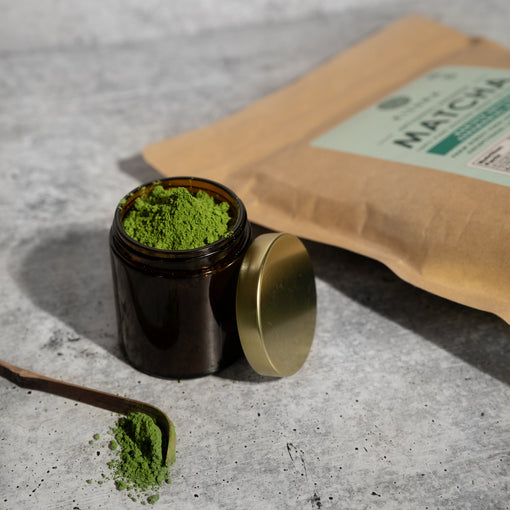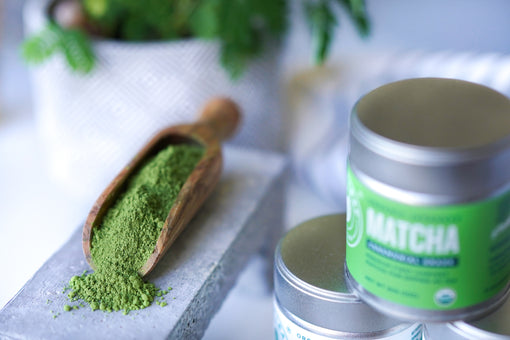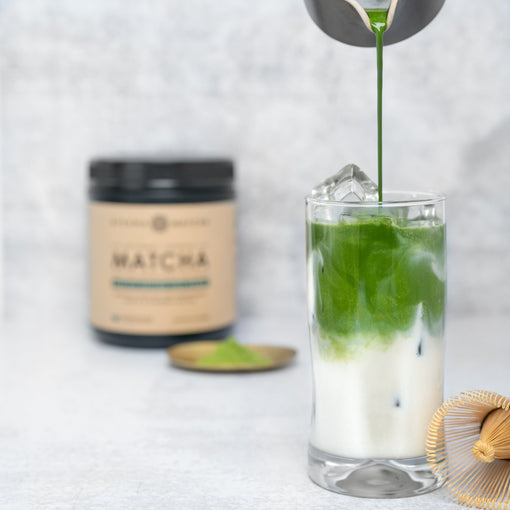What is Ceremonial Grade Matcha?
Young tea leaves and buds picked for Ceremonial Grade matcha are harvested during Ichibancha (literally meaning “first tea” or First Harvest season from late April to May) and is regarded as the highest quality one can consume. They are found at the very top of the tea bush and are extremely delicate, imparting a natural sweetness to matcha due to its higher concentration of L-theanine. Another characteristic to note is that younger tea leaves contain more chlorophyll than the older tea leaves harvested for culinary grade matcha, which is responsible for imparting more of a vibrant green hue to ceremonial grade matcha.
What is Culinary Grade Matcha?
Tea leaves processed into Culinary Grade matcha are harvested during Second Harvest or Nibancha (meaning “second tea” and refers to the Second Harvest of the year taking place from June to the end of July) and Sanbancha (meaning "third tea" and refers to the Third Harvest season). These tea leaves are “older” and have been exposed to more sunlight than the younger tea leaves reserved for Ceremonial Grade matcha, which impart a rich, bolder flavor due to higher concentrations of antioxidants known as catechins (contributing more of those “bitter” notes once culinary grade matcha is prepared) and still provides a beautiful color. Culinary Grade matcha is often referred to as “lower quality” than Ceremonial Grade, which is partly true due to the information shared above, but this in no way means that Ceremonial Grade is better than Culinary Grade; they each have different use cases and preparation guidelines and should not be compared to one another. One thing to keep in mind when trying to determine which grade will best suit your needs is considering the intended use case.
So what should I use in my shop?
Cafes and coffee shops that want to provide their customers exceptional lattes or tea drinks with matcha might want to consider an early harvest "ceremonial" matcha for their menu. As described above, you will achieve a brighter green finish and a smooth, natural sweet flavor. If you own a shop that is baking, making smoothies, or creating an ice cream dish, often times a later harvest matcha, or "culinary" matcha will work perfect for your creation.
If you would like to browse our selection of matcha offerings, please visit our shop today or contact our team for free samples. We want our wholesale matcha customers to have what they need to make the most informed decision!



